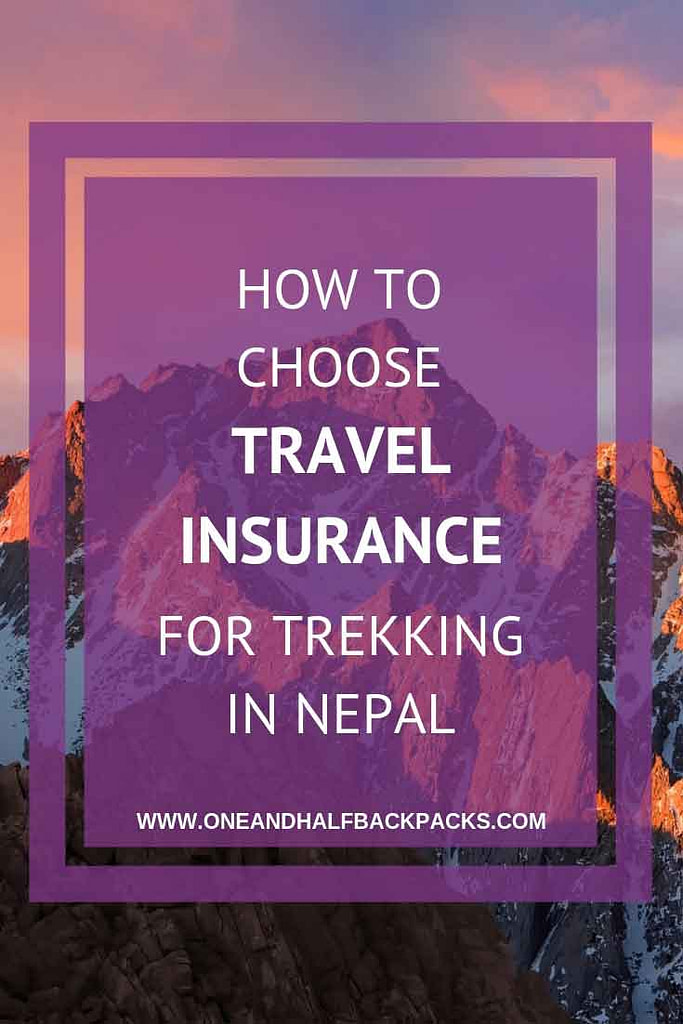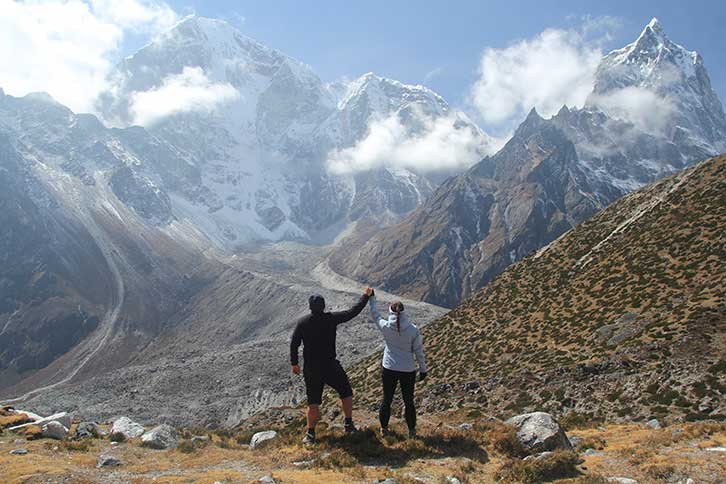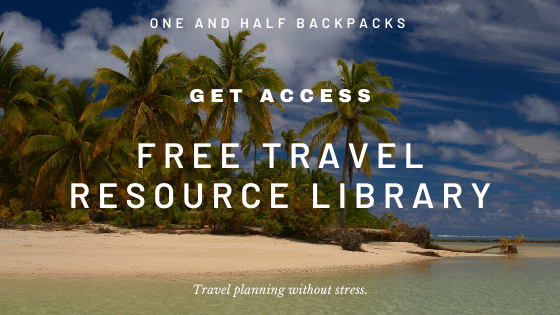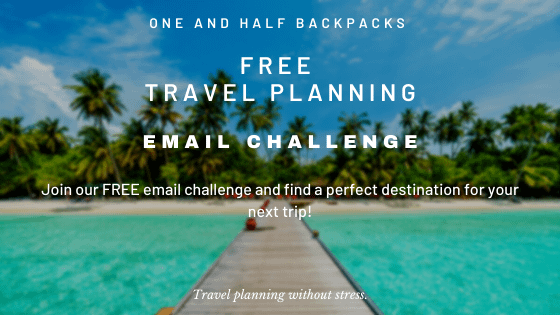Choosing the right travel insurance for trekking in Nepal should be every trekker´s priority. Trekking in Nepal is a wonderful experience, but let´s be real, it can be dangerous. You are going to trek in an open wilderness, without roads, through passes and in the high altitudes. Sometimes you can be days far from the nearest healthcare facility. So going without proper travel insurance should not be even on your mind.
Would you like to learn a few more tips about travel planning? Check our Reverse Travel Planning Strategy.
However, today I do not want to write much about the importance of travel insurance for trekking in Nepal. Going without insurance, in my mind, would be a complete suicide which would put you in great possible danger.
The importance of travel insurance for trekking in Nepal
But for those of you that are still thinking about going without any cover, let´s go quickly through some reasons why it is important to have travel insurance for trekking in Nepal.
Even though Nepal is a very popular trekking destination, maybe one of the most popular in the world, Nepal is still considered to be one of the poorest countries in the world. With it comes some risks, that you should be ready for. From injuries, high altitude sickness and poor health care services to minor theft.
Also read – How to budget for the Everest Base Camp Trek?
The biggest problem in Nepal is not the actual medical expenses but the distances. Medical expenses are not that high in Nepal, in comparion with Japan for example. If you plan to trek in the Himalayan mountains, you can be days far from any medical help. What if you step on a loose stone and break your ankle? What if you do all the precautions not to get high altitude sickness, but it still strikes you? What if you get food poisoning? Or what if you get lost in the middle of mountains? There are no roads. No cars. Usually no internet and no phone coverage. What will you do? Getting you from the mountains to the hospital requires a lot of effort and an effort is an expensive commodity.
So when the importance of travel insurance is out of the table, let´s talk about the main issue – How to choose the right travel insurance for trekking in Nepal?
How to choose the right travel insurance for trekking in Nepal
As an ex-financial advisor, I am very conscientious about choosing the right travel insurance. I am the person that annoys travel insurance companies with hundreds of questions about their policies. I am the one who reads the whole contract twice. And I especially read everything that is written by the small font.
For me travelling is about facing unexpected situations. That is what I like to do because I feel that overcoming unexpected makes me stronger. However, when it comes to health I want to know I am properly prepared if anything unexpected happens.
Also read – Everest Base Camp trek detailed guide
So, if you do not belong between small-font-love-readers, this article is for you. In this post, I tried to outline what coverage your travel insurance for trekking in Nepal should definitely have.
The right travel insurance for trekking in Nepal should cover risks for:
Medical expenses – travel medical expenses cover you in the case you become ill or injured while you are trekking. The insurance will pay for your emergency medical expenses in the event you become sick or injured. This also includes transport costs and help to locate doctor, hospital or nearest healthcare facility. It usually also comes with a 24-hour emergency medical assistance service.
The one mistake we see that travellers often do is to go with the same travel insurance company over and over again for all the trips. And why it can be a mistake? Because every trip needs a special set of risks to cover and not every company ensures every risk. Even though I have my preferred insurance company myself, before every trip I review all the risks and coverage. That way I know that my preferred company cover all the risks I need. And if it doesn´t I simply choose a different one.
Some travel insurance companies cover medical bills unlimitedly, some put limits on the coverage and some will charge you with excess. It is not always necessary to buy the most expensive premium coverage, but going strictly with the cheapest option is not advise either.
High altitude coverage – you would be surprised how many insurance companies don´t cover trekking in high altitudes in their policies. Especially trekking above 5 000 metres above sea level. There is literally no insurance company in the Czech Republic that would cover trekking above 5 000 metres. Not even with the premium cover.
Travel insurance companies usually charge a premium rate for the high altitude, but it is well worth it. Don´t risk your life thinking that if anything happens you will just walk a few metres down. Most accidents and complications happen in higher altitude. Especially high altitude sickness strikes without any further notice.
Helicopter rescue – Helicopter rescue is a total necessity. Without roads and cars, the only option to save your life in danger is by a helicopter. And trust me, you don´t want to pay a bill for a helicopter rescue. The average bill for a helicopter rescue can reach up to $8 000.
Natural disasters – It is usually called Travel Disruption cover. We do not choose to ensure this risk every time we travel. But if we travel to third world countries with volcanoes, avalanches, earthquakes or countries with civil unrest, we always choose to spend more money and cover this risk. Nepal is an underdeveloped country, that often suffers from earthquakes. Just remember the 2015 earthquake. The earthquake was so strong that it left Nepal in chaos for weeks.
Search and rescue – This was a particularly important risk for us to cover. We chose to trek alone without any travel agency or a guide and even though the trails are well marked, we felt like it would be good to have it covered. If you get lost in the mountains and rescuers have to call for a search party, the bill for it can skyrocket.
Cancelled or Delayed flights – Not complete necessity but if you travel on a tight schedule, it might be worthy of consideration. If you plan to do the Everest Base camp trek and fly through Lukla airport, it could be an especially important risk to cover.
Personal belongings, baggage and money – For us, this is just an additional coverage in case of theft. But if you travel with an expensive camera or any other equipment it might be good to consider it.
Now you know what you should be looking for when comparing the travel insurance companies. But we would like to make your life even easier. We compared the two probably most popular travel insurance companies. I am talking about True Traveller and World Nomads. These two companies were the ones we were deciding between. Even though both insurance companies are great and both have good reviews, there are two big differences between them. We will not discuss the amount of coverage because you can adjust that, but the policy itself.
Comparison of travel insurance for trekking in Nepal:
| World Nomads | True Travellers | |
|---|---|---|
| High Altitude cover | Level 2 Sport | Adventure Pack |
| Helicopter rescue | YES, no excess | YES, with excess |
| Search and rescue | NO | YES |
As you can see from the table above, the main disadvantage of World Nomads is that they do not offer the search and rescue cover. This was actually the biggest reason why we chose not to go with them.
It might seem as not important at first but think about it. Even though the Everest Base camp trek is not particularly hard for orientation anything can happen in the mountains. If you plan to do even more remote trek, search and rescue cover should be very vital for you. Imagine this – you are trekking, following map, but messing up somewhere along the way and suddenly you are lost. What now? Storms can come without any notice, you will lose a trail in the storm and the problem arises. Mountains can be deadly, it is good to not underestimate the risks. If anyone notices that you are missing, they will have to call for a search and rescue party. That means dozens of people searching through day and night, involving helicopters and other necessary operations. Can you even imagine how much does it cost?
In comparison, the main disadvantage of True Travellers is a huge excess you need to pay in case of a helicopter rescue. Even though both travel insurance offer helicopter rescue, True Travellers comes with a quite huge excess if you actually have to be rescued. The excess can reach up to 750 pounds. Which is quite a lot. The main reason for the huge excess is the very well-known helicopter scam. Very often travellers that reach the Everest Base Camp are too lazy to spend another 5 days going down, so they just pretend to be suddenly sick and call for a helicopter rescue. So the excess is just a defence mechanism so you don´t claim the rescue without a serious reason.
We were discussing which company to choose for weeks. In the end, we decided to go with True Traveller even with risking the huge excess for the helicopter rescue. For us, it was more important to have a search and rescue covered than paying the excess.
So what do you think? Have you ever trek through Himalayas? Which travel insurance did you use? What travel insurance for trekking in Nepal would you choose? Let us know in the comment section down below. We would love to hear from you and if you like it we would appretiate if you could share it with your friends through social media.





